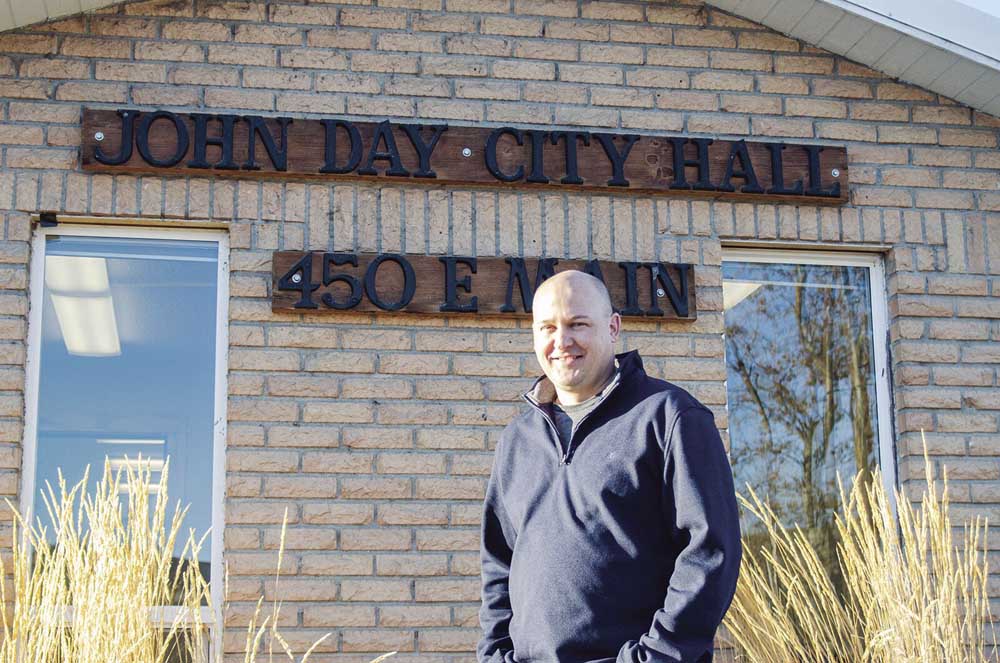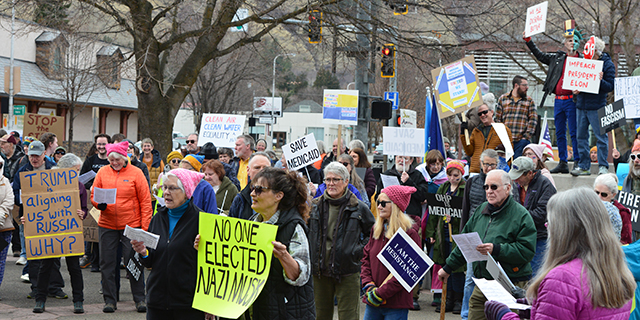Primrose designs solar water-pump system; unit on display at SolWest
Published 5:00 pm Tuesday, July 22, 2003

- Ken Primrose, Rangeland Management Specialist for Bureau of Land Management, shows off a solar-powered water pump. The pump is powered by four solar panels, each putting out 75 watts of energy. Total cost for unit including the trailer was approximately $8,000. Funding was provided through donations and by the BLM. The Eagle/TIM ADAMS
JOHN DAY – “Riparian” is a word used to describe land located along the banks of streams, rivers and other bodies of water, and is unique ecosystem where the vegetation is primarily influenced by the presence of the water.
Riparian areas comprise less than 2 percent of the total land area in the western United States, and they are the most valuable and most productive of all land types, said Bureau of Land Management Range Management Specialist Kenneth Primrose. Their vegetation protects streambanks and shorelines from erosion, filters sediment, captures water pollutants and builds stream banks.
Livestock grazing in these riparian areas has been closely scrutinized by federal agencies and other users of public lands, and riparian areas in grazing allotments are expected to be maintained with good vegetative covering along stream banks in order to filter sediments, capture water pollutants and build the banks.
One technique to manage livestock grazing in the riparian areas is to develop off-stream water sources.
Historic research and experience has shown that stock water developments do divert livestock use, improve grazing distribution and forage management flexibility, and solar-powered, off-site watering systems offer an option for diverting livestock away from riparian areas.
Recognizing this, the Bureau of Land Management, Prineville District, provided funds to design and construct a mobile solar pumping unit to address the issue.
The solar-powered livestock water-pumping system was designed by Kenneth Primrose, Range Management Specialist, John Day Field Office, Prineville District of the BLM.
Other cooperating on the project included Lance Barker, Morning Hill Associates; Dave Chamberlain, Associate Professor, Department of Rangeland Resources; Oregon State University; Tom Bishop, Sunelco Inc.; and John Morris, Fishery Biologist, John Day Field Office, Prineville District of the BLM.
The system was constructed on a small trailer approximately 16 feet long and eight feet wide, and consists of a solar array of four 75-watt panels wired in a series and a variable-voltage pump. The submersible pump will pump three to eight gallons per minute depending upon the vertical elevation it pushes the water and will push water to a maximum of 100-foot vertical elevation.
The total cost of the solar panels, submersible pump, pump controller, float switch, pole mount for the solar panels and the wiring was $3,768.10.
In addition, four 10-foot panels and two eight-foot panels were purchased to place around the trailer to protect the solar panels and fabricated boxes on the trailer from potential damage by livestock, which made the total cost of the completed unit approximately $8,438.
Because of the solar pumping unit’s mobility, it is a valuable piece of equipment that could be used as a tool to manage other resources. Another application would be to pump water into storage tanks for fire engines and it could also be used to fill a series of storage tanks along streams or water sources to provide water for livestock or wildlife.
The unit will be on display at the SolWest Renewable Energy Fair on July 25-27 at the Grant County Fairgrounds.





